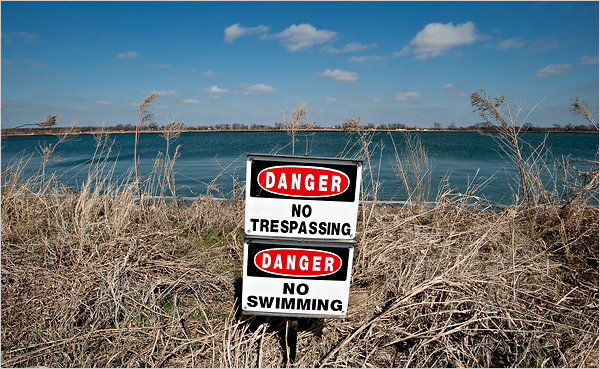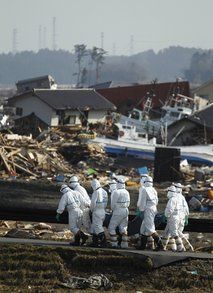
© Agence France-PresseAccording to a key roster a total of 52,000 workers were responding to the Gulf oil spill as of August 2010
Jamie Simon worked on a barge in the oily waters for six months following the BP spill last year, cooking for the cleanup workers, washing their clothes and tidying up after them.
One year later, the 32-year-old said she still suffers from a range of debilitating health problems, including racing heartbeat, vomiting, dizziness, ear infections, swollen throat, poor sight in one eye and memory loss.
She blames toxic elements in the crude oil and the dispersants sprayed to dissolve it after the BP-leased Deepwater Horizon oil rig exploded in the Gulf of Mexico about 50 miles (80 kilometers) off the coast of Louisiana on April 20, 2010.
"I was exposed to those chemicals, which I questioned, and they told me it was just as safe as Dawn dishwashing liquid and there was nothing for me to worry about," she said of the BP bosses at the job site.
The local doctor, Mike Robichaux, said he has seen as many as 60 patients like Simon in recent weeks, as this small southern town of 10,000 bordered by swamp land and sugar cane fields grapples with a mysterious sickness that some believe is all BP's fault.
Andy LaBoeuf, 51, said he was paid $1,500 per day to use his boat to go out on the water and lay boom to contain some of the 4.9 million barrels of oil that spewed from the bottom of the ocean after the BP well ruptured.



Comment: Two things stand out about this case:
1) It's reasonable to assume that they have above-ground radiation monitors at radioactive waste dumps. Is it possible the readings are picking up on the fallout from Fukushima and that the idea that these readings were taken underground is just disinfo?
2) Or that radiation really IS leaking from this waste dump, which - considering the timing of Japans disaster - speaks to a phenomenon which might not be easily explainable. An example that comes to mind is of the many construction cranes collapsing around the US and in other countries prior to, and at the beginning of the housing crash.
See:
Florida: Crane Collapse Blamed For Fuel Spill
Illinois: Man dies in crane collapse
Deadly crane collapse probed in Hunan, China
Crane collapse kills seven at Vietnam port